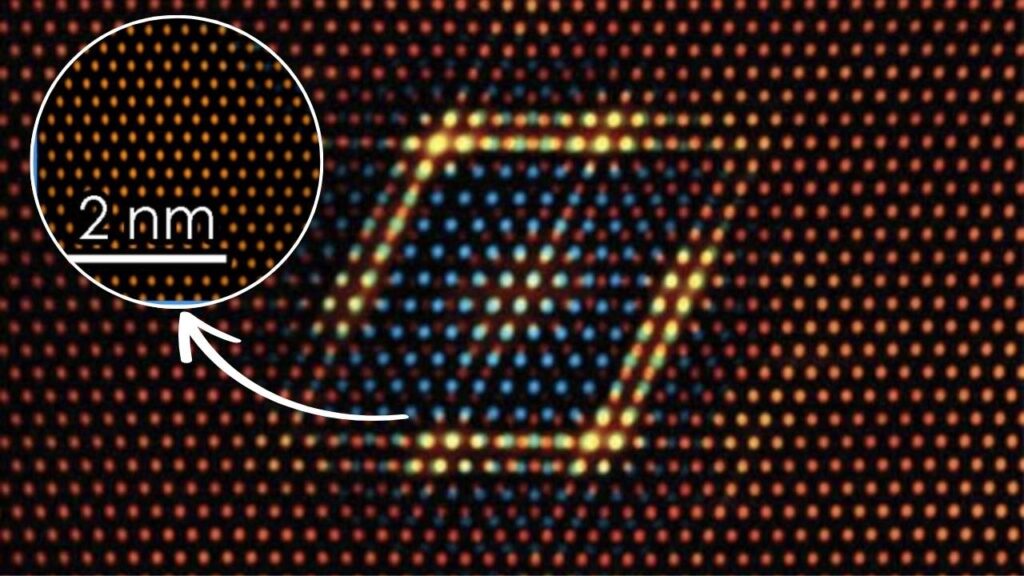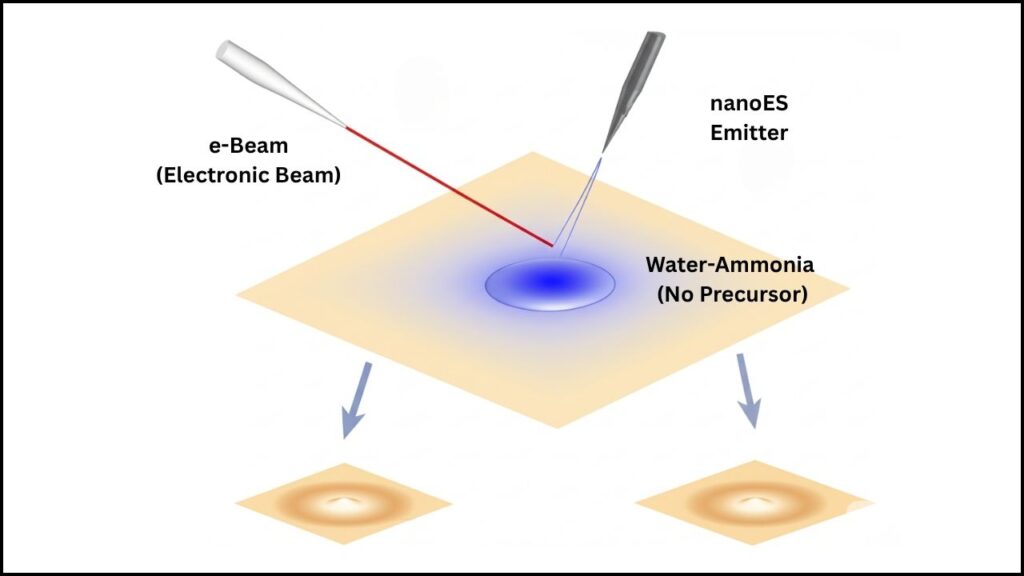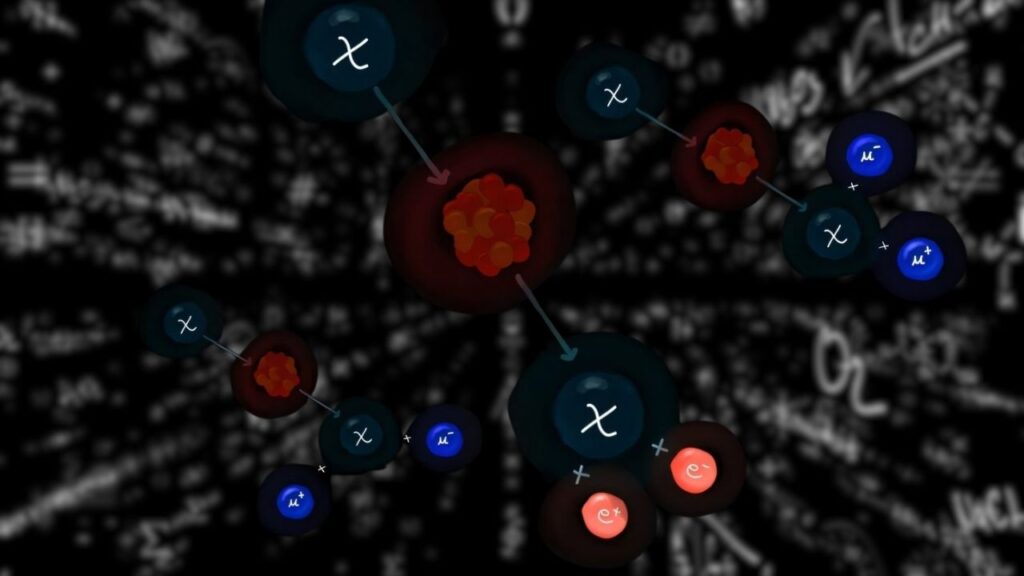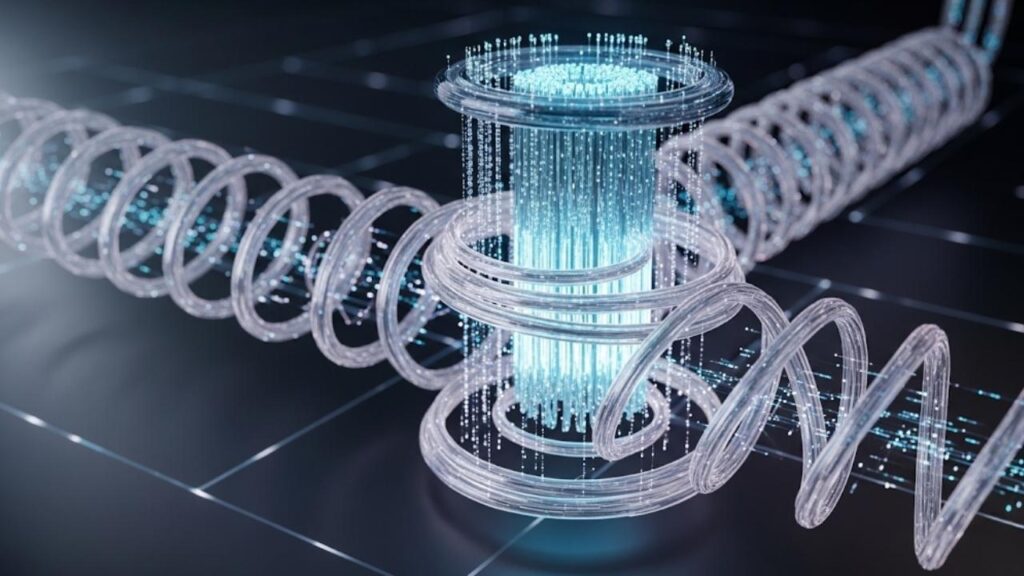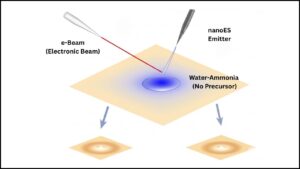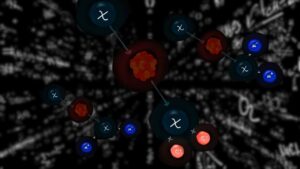Astronomers have recently made a groundbreaking confirmation that “standing shocks” exist in the flows of matter spiraling into black holes. This exciting discovery marks a major milestone in our understanding of how black holes feed and interact with their surroundings. But what exactly are standing shocks in black hole flows, why do they matter, and what does this mean for science and space exploration? Let’s dive deep with expert insights to explain this cosmic breakthrough in a way anyone can appreciate.

Table of Contents
What Are Standing Shocks in Black Hole Flows?
Picture a black hole as a cosmic giant vacuum cleaner, pulling in gas, dust, and other matter around it. This matter swirls closer and faster due to the black hole’s immense gravity, forming what scientists call an accretion flow or disk around it. Now, as this gas spirals inward, it sometimes suddenly jumps in speed or density—similar to a shockwave or ripple forming in water when something disrupts its flow. When this shockwave stays steady at a fixed spot instead of moving, it’s called a standing shock.
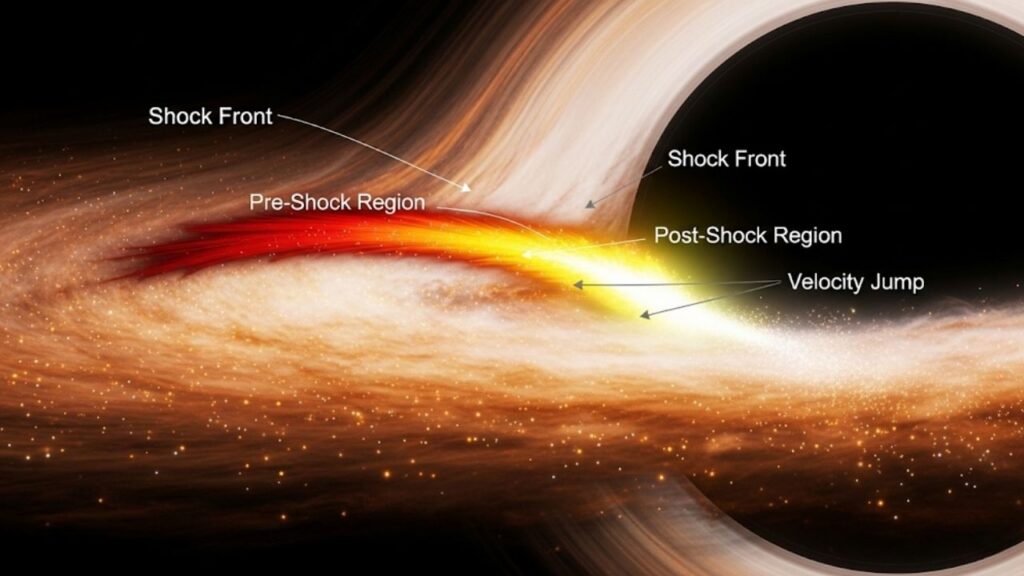
Standing shocks form because of competing forces close to the black hole: gravity pulls matter inward, while the swirling motion and pressure create a barrier. When the gas can’t smoothly balance these forces, it abruptly changes speed and compresses, creating a shock. This shock can cause the gas to heat up significantly and radiate energy. Understanding these shocks help scientists explain some mysterious signals from black holes, like rapid changes in brightness or specific X-ray patterns called quasi-periodic oscillations (QPOs).
Astronomers Confirm Standing Shocks in Black Hole Flows
| Key Aspect | Details |
|---|---|
| Phenomenon | Standing shocks in black hole accretion flows |
| Discovered by | Prof. Mao Jirong and international collaborators (Chinese Academy of Sciences, et al.) |
| Method | General relativistic magnetohydrodynamic (GRMHD) simulations |
| Where it forms | Low-angular-momentum accretion flows around black holes |
| Observational link | Explains Quasi-Periodic Oscillations (QPOs) in X-ray binaries and active galactic nuclei (AGNs) |
| Significance | Advances understanding of black hole feeding, high-energy emissions, and galaxy evolution |
| Primary Publication | The Astrophysical Journal (August 2025) |
| Read more (official) | Official Details |
The confirmation of standing shocks in black hole accretion flows is a monumental advance in astrophysics. It provides a solid, tested explanation for complex behaviors seen around black holes, linking theoretical physics to real observations. This understanding opens new doors to exploring how black holes grow, how they influence galaxies, and the energetic phenomena they power. As simulations and telescopes improve, this breakthrough will continue to shape the future of cosmic science.
Why This Discovery Matters
Black holes, with gravity so strong that even light cannot escape, have long fascinated both scientists and the public. Yet many details about how they feed on matter and influence their galaxies have remained stubbornly elusive. Studying how matter behaves just outside a black hole’s event horizon—the boundary beyond which nothing returns—is crucial to decode these mysteries.
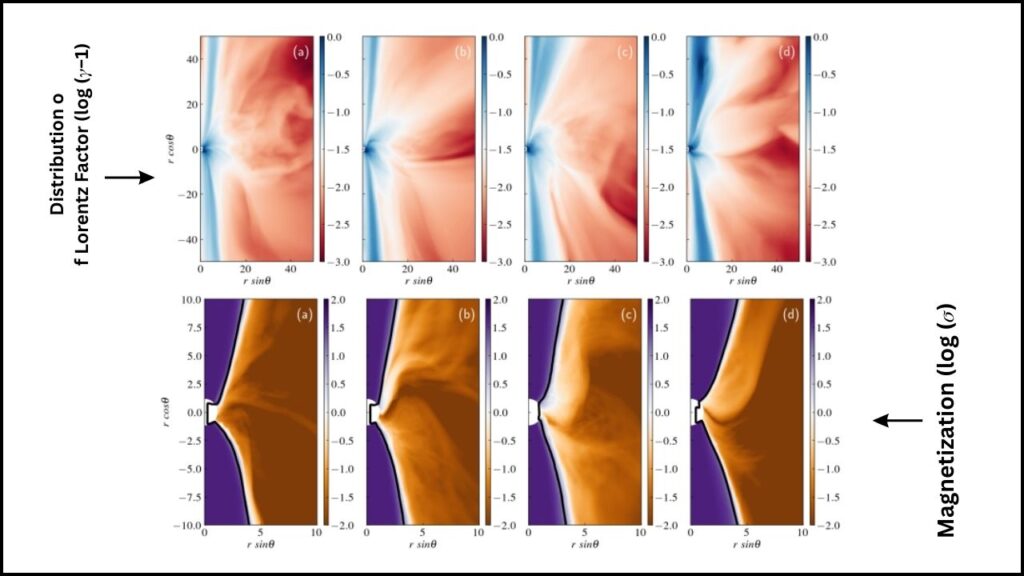
Confirming the existence of standing shocks in black hole accretion flows changes the game. It provides:
- A direct physical explanation for some observed light patterns and radiation bursts from black holes.
- Better models to predict black hole behavior and their impact on galaxy formation.
- Insight into particle acceleration near black holes, linked to cosmic rays and energetic jets shooting out from black hole regions.
Professor Mao Jirong and the team used advanced simulations blending Einstein’s theory of gravity (general relativity) and magnetohydrodynamics (how magnetic fields affect fluids) to reveal these stable shock structures near black holes. These shocks were found in low-angular-momentum accretion flows, meaning the infalling gas wasn’t spinning fast enough to create a smooth flow, making the shocks a natural consequence.
Breaking Down the Science for Everyone
What Happens Around a Black Hole?
Imagine water swirling down a drain. As it spins faster, it moves closer to the center but also feels forces pushing it outward. In a similar way, gas and dust whirl around a black hole, creating an accretion disk. As the material gets closer, gravity pulls it in more strongly, but the spinning motion and pressure push back. Where these forces collide, shocks can form.
Visualizing Standing Shocks
A shock is similar to a sudden traffic jam on a highway. Cars slow down or stop abruptly, causing a pile-up that forms a stationary wave of congestion. In space, this shock results in hot, dense regions where energy is released—in the form of light or X-rays—which astronomers can detect.
Role of Magnetic Fields
Magnetic fields threading through the gas add complexity to this dance. They can channel and speed up particles, affect how the gas cools by emitting radiation, and stabilize or destabilize shock formations.
Why Low Angular Momentum Matters
If the gas spins too fast, it smoothly orbits the black hole. But if it spins slowly (low angular momentum), the gas plunges inward more chaotically, favoring shock formation.
A Step-by-Step Guide to Understanding Standing Shocks
1. Matter Falls Toward Black Hole
Gas and dust from space gradually lose energy and move inward, pulled by gravity.
2. Formation of Accretion Disk
Material settles into a disk shape, spinning faster near the center.
3. Competing Forces Create Conditions for Shock
Gravity pulls inward; pressure and spin push outward; imbalance sets the stage.
4. Shock Forms and Stays in Place
The gas suddenly compresses and heats in a localized “standing shock,” which remains stable.
5. Shock Influences Emission
Hot gas emits X-rays and radiation that astronomers detect, creating observable signals.
6. Links to Observable Phenomena
Shock oscillations explain quasi-periodic oscillations (QPOs) seen in X-ray signals from black holes.
Practical Implications for Astronomy and Science
Knowing how standing shocks behave helps scientists:
- Develop precise models predicting black hole emissions.
- Improve interpretations of observational data from telescopes like NASA’s Chandra, ESA’s XMM-Newton, or the Event Horizon Telescope.
- Understand how jets of energy and particles are launched from black holes—a key factor in galaxy evolution.
- Connect theoretical physics with real cosmic evidence, enhancing fundamental physics knowledge.
Dark Matter Inside Gas Giants Could Turn Into Black Holes, Scientists Warn
Colossal Black Hole 36 Billion Times Sun’s Mass Discovered—One of the Largest Ever Seen
This Black Hole Shouldn’t Exist – And Physics Might Be Broken Because of It
FAQs About Astronomers Confirm Standing Shocks in Black Hole Flows
What is a standing shock in simple terms?
It’s a “traffic jam” in space where infalling gas suddenly slows and compresses near a black hole, staying in the same place as it radiates energy.
How does this discovery help us understand black holes better?
It explains certain timing signals and emissions we observe from black holes, linking theory with what telescopes see and expanding our knowledge of their feeding process.
Can standing shocks be observed directly?
We can’t see shocks directly, but scientists detect the radiation and X-ray patterns they produce, which match predictions from shock models.
What tools helped scientists discover these shocks?
Advanced computer simulations using Einstein’s relativity and magnetohydrodynamics allowed researchers to model how matter and magnetic fields behave near black holes.
Why are some black hole accretion flows shock-free?
If the gas has high angular momentum (spins fast), it creates a smoother flow without shocks. Shocks appear mostly in low-angular-momentum flows.
What are quasi-periodic oscillations (QPOs)?
They are rhythmic changes in X-ray brightness from black holes, linked to the oscillations of these standing shocks.
